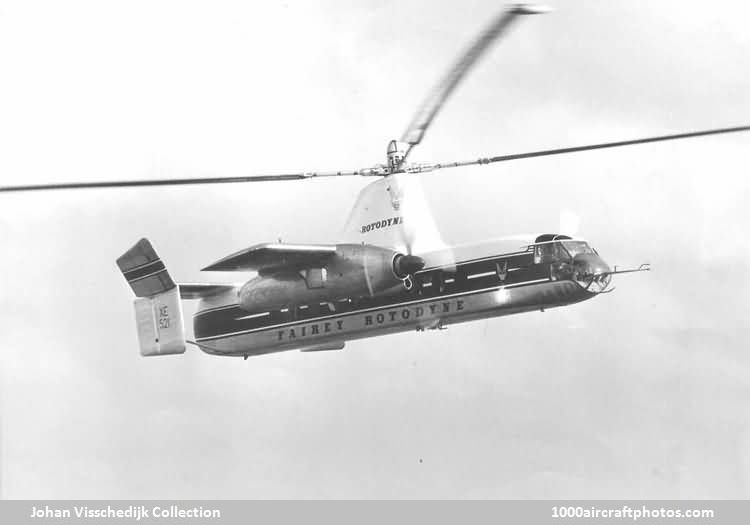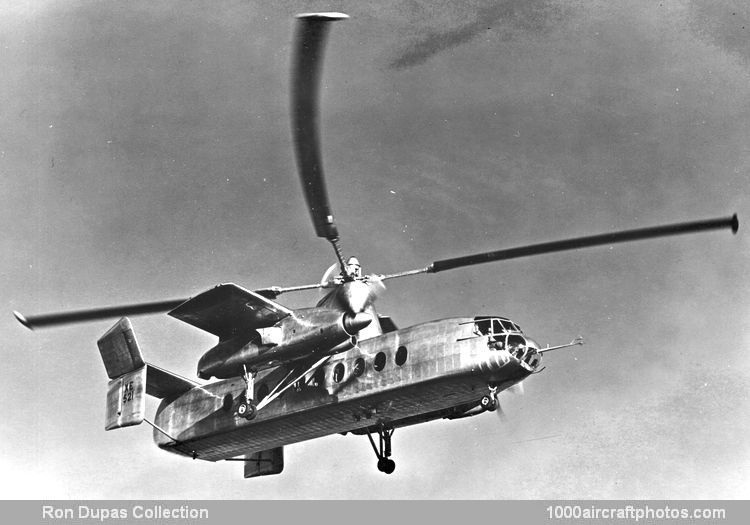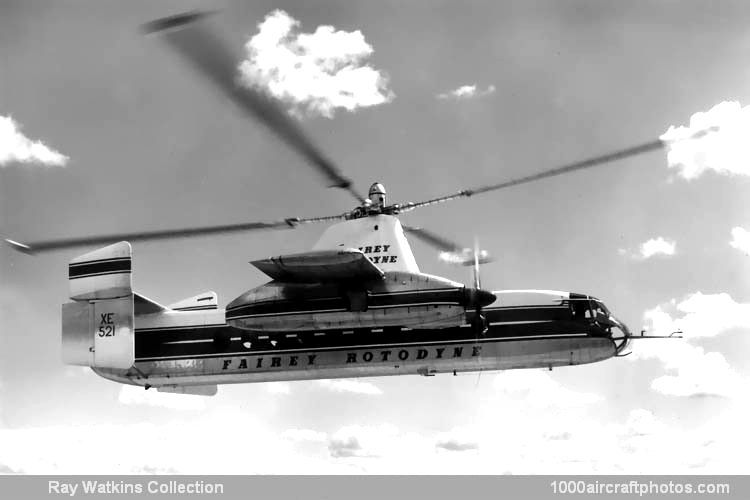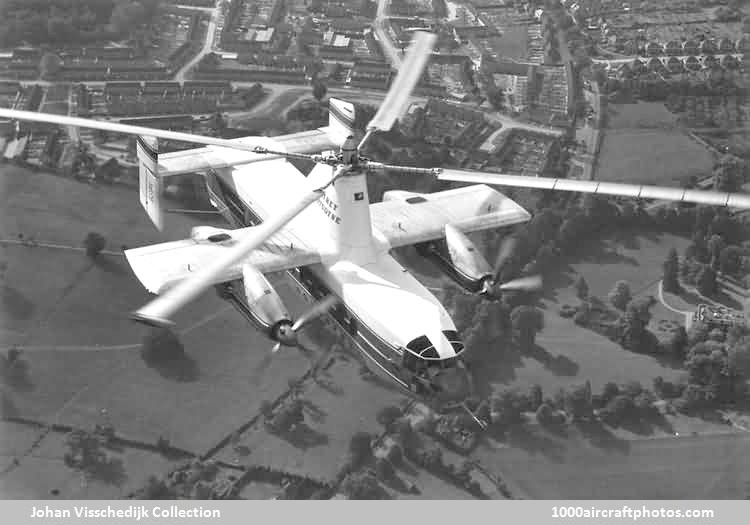02/14/2004. Remarks by
Johan Visschedijk: "The Rotodyne was an experimental vertical take off and landing transport using the principle of a powered rotor for VTOL capability, combined with conventional forward propulsion and a fixed wing to off-load the rotor and make possible higher cruising speed. Fairey Aviation used for the development of the Rotodyne the experience gained from the Gyrodyne of the 1940s.
Technically a compound helicopter rather than a true convertiplane the Rotodyne was intended as a medium-haul "flying bus". With a crew of two and forty passengers it would be capable of flying economical payload between city centers.
(
Ron Dupas Collection)
Powered by two 2,800 eshp Napier Eland N.E.L.3 turboprop engines mounted under wings, and serialed as XE521 to the Ministry of Supply, the sole prototype Rotodyne Y flew for the first time from White Waltham on November 6, 1957.
The first transition from vertical to level flight was made on April 10, 1958, after which the procedure became routine during tests. On January 5, 1959 the Rotodyne set a rotary-winged world speed record at 190.9 mph (307 kmh) over a 62 mls (100 km) closed circuit. Also in 1959 the aircraft was modified to increase the wing angle of incidence and to introduce ailerons. A third vertical fin centered on the tail had been added for increased performance at higher speeds. Further changes include rotor head fairings and shortening of jet outflux pipes outboard of engine nacelles.
(
Ray Watkins Collection)
A larger version, the Rotodyne Z, was offered carrying up to 70 passengers and powered by 5,250 hp Rolls-Royce Tyne engines by the time Fairey Aviation helicopter interests were acquired by Westland in 1960. The program was continued but due to lack of government support it came to a halt in early 1962.



